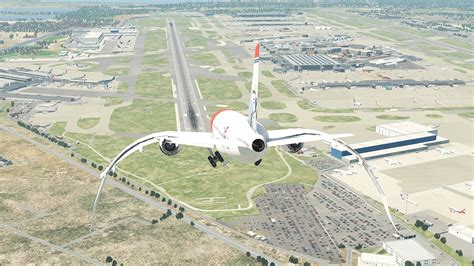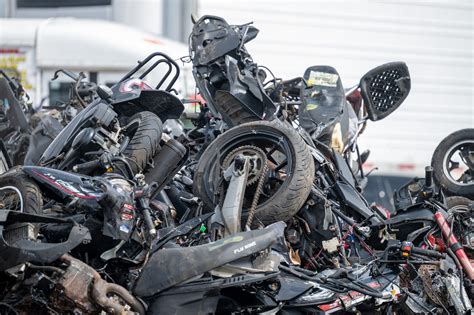
Boeing is facing renewed scrutiny over the safety and quality of its 787 Dreamliner aircraft after a whistleblower testified before Congress, raising serious concerns about manufacturing flaws, and following reports of four emergency landings involving the model in the past month. The Dreamliners involved are the same model as the plane at the center of recent safety concerns.
Boeing is under intense pressure after engineer Sam Salehpour publicly stated that the company took shortcuts while assembling the 787, potentially compromising the structural integrity of the aircraft. Salehpour, who has worked for Boeing for more than a decade, claimed these shortcuts could lead to premature fatigue failure of critical joints, potentially causing the plane to break apart mid-flight.
Salehpour’s allegations center on the way Boeing joins sections of the 787 fuselage. He claims that Boeing changed its assembly process to speed up production, which led to improperly filled gaps between the fuselage sections. According to Salehpour, workers were pressured to use excessive force to close these gaps and then to shim them to make them appear properly aligned, rather than addressing the underlying manufacturing flaws. He suggests this could lead to fatigue and eventually structural failure.
“I saw people jumping on the pieces of the airplane to get them to align,” Salehpour said during his testimony. He claimed that when he raised these concerns internally, he was retaliated against and transferred to a different program.
In addition to Salehpour’s testimony, four emergency landings involving the 787 Dreamliner in the past month have heightened concerns. While details of the specific incidents vary, they have added to the public’s unease about the aircraft’s reliability. The incidents, which are still under investigation, have prompted calls for stricter oversight of Boeing’s manufacturing processes.
The Federal Aviation Administration (FAA) is taking Salehpour’s claims and the recent incidents seriously. The agency has launched an investigation into the manufacturing practices of Boeing’s 787 Dreamliner and is reviewing all available data to determine whether the aircraft meets safety standards.
Boeing has defended its manufacturing processes and the safety of the 787 Dreamliner. The company stated that it has full confidence in the aircraft and that it adheres to the highest safety standards. Boeing added that it is cooperating with the FAA’s investigation and is committed to addressing any concerns raised by Salehpour or others.
Whistleblower’s Claims Detail Alleged Safety Lapses
Salehpour’s testimony included detailed allegations about specific manufacturing flaws and quality control issues in the assembly of the 787 Dreamliner. He claims that the changes to the assembly process were implemented to increase production rates, but they compromised the quality of the aircraft.
According to Salehpour, the gaps between the fuselage sections were not properly filled, which could lead to premature fatigue failure. He alleged that workers were pressured to use excessive force to close these gaps, and then to use shims to make them appear properly aligned. This process, he says, could mask underlying manufacturing flaws and increase the risk of structural failure over time.
Salehpour also stated that he witnessed instances of workers jumping on the pieces of the airplane to get them to align. He claims that this practice could damage the aircraft’s structure and further compromise its safety.
He said that when he raised these concerns internally, he was met with resistance and retaliation. Salehpour claims he was transferred to a different program, effectively silencing his concerns.
Four Emergency Landings Raise Further Questions
The four emergency landings involving the 787 Dreamliner in the past month have added to the concerns about the aircraft’s safety. While the specific details of these incidents vary, they have all raised questions about the reliability of the aircraft.
One of the incidents involved a 787 Dreamliner that experienced a sudden loss of altitude shortly after takeoff. The pilots were able to regain control of the aircraft and return to the airport safely, but the incident prompted an investigation by the FAA.
Another incident involved a 787 Dreamliner that experienced a hydraulic system failure. The pilots were able to land the aircraft safely, but the incident raised concerns about the reliability of the aircraft’s hydraulic systems.
A third incident involved a 787 Dreamliner that experienced a fire in the cargo hold. The pilots were able to extinguish the fire and land the aircraft safely, but the incident raised concerns about the fire safety of the aircraft.
The fourth incident involved a 787 Dreamliner that experienced a problem with its landing gear. The pilots were able to land the aircraft safely, but the incident raised concerns about the reliability of the aircraft’s landing gear.
While the causes of these incidents are still under investigation, they have all contributed to the growing concerns about the safety of the 787 Dreamliner.
FAA Investigation Underway
The FAA is taking Salehpour’s claims and the recent incidents seriously. The agency has launched an investigation into the manufacturing practices of Boeing’s 787 Dreamliner and is reviewing all available data to determine whether the aircraft meets safety standards.
The FAA investigation will focus on the specific allegations made by Salehpour, as well as the causes of the recent emergency landings. The agency will also review Boeing’s quality control procedures and manufacturing processes to ensure that they meet safety standards.
The FAA has the authority to take a number of actions if it finds that the 787 Dreamliner does not meet safety standards. These actions could include requiring Boeing to make changes to its manufacturing processes, issuing airworthiness directives, or even grounding the entire fleet of 787 Dreamliners.
Boeing Defends 787 Safety
Boeing has defended its manufacturing processes and the safety of the 787 Dreamliner. The company stated that it has full confidence in the aircraft and that it adheres to the highest safety standards.
Boeing added that it is cooperating with the FAA’s investigation and is committed to addressing any concerns raised by Salehpour or others. The company has also stated that it has implemented a number of improvements to its manufacturing processes in recent years to ensure the safety of its aircraft.
“We are fully confident in the 787 Dreamliner,” Boeing said in a statement. “This aircraft is safe and reliable, and we are committed to working with the FAA to ensure that it remains so.”
Historical Context and Parallels
The current situation with the Boeing 787 Dreamliner evokes parallels with past safety crises faced by the company. The most notable recent example is the two fatal crashes of the Boeing 737 MAX in 2018 and 2019, which claimed the lives of 346 people. These crashes were linked to a faulty flight control system known as MCAS (Maneuvering Characteristics Augmentation System), which was designed to compensate for the 737 MAX’s larger engines but ultimately malfunctioned and caused the planes to nosedive.
The 737 MAX crisis revealed significant shortcomings in Boeing’s design, development, and certification processes, as well as a culture that prioritized profit over safety. The FAA was also criticized for its oversight of Boeing, with some alleging that the agency had become too reliant on Boeing to self-certify its aircraft.
The current concerns surrounding the 787 Dreamliner raise questions about whether Boeing has truly learned from the 737 MAX crisis. The allegations of manufacturing flaws and quality control issues suggest that some of the same problems that plagued the 737 MAX program may still exist within Boeing. The fact that a whistleblower felt compelled to come forward with his concerns also raises questions about Boeing’s internal culture and its willingness to address safety issues.
Economic and Industry Impact
The safety concerns surrounding the 787 Dreamliner have the potential to have a significant impact on Boeing, the airline industry, and the global economy.
For Boeing, the crisis could lead to significant financial losses. The company may be forced to halt production of the 787 Dreamliner, which would disrupt its supply chain and lead to job losses. Boeing may also face lawsuits from airlines and passengers, as well as fines from regulators.
The airline industry could also be affected by the crisis. Airlines that operate the 787 Dreamliner may be forced to ground their aircraft, which would disrupt their schedules and lead to flight cancellations. Airlines may also be reluctant to order new 787 Dreamliners, which would hurt Boeing’s sales.
The global economy could also be affected by the crisis. The airline industry is a major contributor to the global economy, and any disruption to the industry could have ripple effects throughout the economy.
The Role of Whistleblowers
Whistleblowers play a critical role in uncovering wrongdoing and protecting public safety. They are individuals who come forward with information about illegal or unethical activities within an organization.
Whistleblowers often face significant risks, including retaliation from their employers, damage to their careers, and social isolation. Despite these risks, whistleblowers are essential to holding organizations accountable and ensuring that they operate in a safe and ethical manner.
The case of Sam Salehpour highlights the importance of protecting whistleblowers and encouraging them to come forward with their concerns. Without whistleblowers, many instances of wrongdoing would go undetected, and the public would be at greater risk.
Expert Opinions and Analysis
Aviation safety experts have expressed concern about the allegations made by Sam Salehpour and the recent emergency landings involving the 787 Dreamliner. They emphasize the importance of a thorough investigation by the FAA and call for Boeing to take immediate action to address any safety concerns.
“These are serious allegations that need to be taken seriously,” said John Goglia, a former member of the National Transportation Safety Board (NTSB). “The FAA needs to conduct a thorough investigation to determine whether there are any manufacturing flaws in the 787 Dreamliner.”
Goglia added that Boeing needs to be transparent about its manufacturing processes and quality control procedures. “Boeing needs to be open and honest with the public about what they are doing to ensure the safety of the 787 Dreamliner,” he said.
Other experts have noted that the 787 Dreamliner is a complex aircraft with a number of innovative technologies. They say that it is important to understand the potential risks associated with these technologies and to ensure that they are properly maintained.
Future Outlook and Potential Outcomes
The future of the Boeing 787 Dreamliner is uncertain. The FAA’s investigation could lead to a number of outcomes, ranging from minor changes to Boeing’s manufacturing processes to the grounding of the entire fleet of 787 Dreamliners.
If the FAA finds that there are significant manufacturing flaws in the 787 Dreamliner, it could require Boeing to make extensive repairs to the existing fleet of aircraft. This would be a costly and time-consuming process, and it could disrupt airline schedules for months or even years.
The FAA could also issue airworthiness directives that require airlines to perform additional inspections or maintenance on the 787 Dreamliner. This would add to the cost of operating the aircraft and could lead to higher fares for passengers.
In the most extreme scenario, the FAA could ground the entire fleet of 787 Dreamliners. This would have a devastating impact on Boeing and the airline industry. It would also lead to widespread flight cancellations and travel disruptions.
Regardless of the outcome of the FAA’s investigation, the safety concerns surrounding the 787 Dreamliner have already damaged Boeing’s reputation. The company will need to take steps to rebuild trust with the public and the airline industry.
The Importance of Independent Oversight
The current situation highlights the importance of independent oversight of the aviation industry. The FAA is responsible for ensuring the safety of air travel, but it has been criticized in the past for being too close to the companies it regulates.
Some have argued that the FAA should be more independent of Boeing and other aircraft manufacturers. They say that the agency should have more resources to conduct its own inspections and testing, and that it should not rely so heavily on the companies to self-certify their aircraft.
The European Union Aviation Safety Agency (EASA) is often cited as a model for independent oversight. EASA is responsible for regulating the aviation industry in the European Union, and it has a reputation for being more independent and rigorous than the FAA.
Consumer Confidence and Travel Plans
The safety concerns surrounding the Boeing 787 Dreamliner could affect consumer confidence in air travel. Some passengers may be reluctant to fly on the 787 Dreamliner, while others may avoid flying altogether.
Airlines may need to take steps to reassure passengers about the safety of the 787 Dreamliner. This could include providing more information about the aircraft’s safety features, offering refunds to passengers who are uncomfortable flying on the 787 Dreamliner, or even replacing the 787 Dreamliner with a different aircraft on certain routes.
The long-term impact on consumer confidence will depend on the outcome of the FAA’s investigation and how Boeing responds to the safety concerns. If the FAA finds that there are significant manufacturing flaws in the 787 Dreamliner, it could take years for Boeing to rebuild trust with the public.
Conclusion: A Critical Juncture for Boeing and Aviation Safety
The confluence of a whistleblower’s credible allegations regarding compromised manufacturing practices and the recent string of emergency landings involving the Boeing 787 Dreamliner has created a critical juncture for both Boeing and the broader aviation safety landscape. The situation demands a swift, thorough, and transparent investigation by the FAA, coupled with a proactive and accountable response from Boeing. The stakes are high, not only for Boeing’s financial future and reputation but also for the public’s trust in the safety of air travel. The lessons learned from the 737 MAX crisis must be heeded to prevent a repeat of past failures and ensure that safety remains the paramount priority in the design, manufacturing, and operation of commercial aircraft. The outcome of this situation will likely shape the future of aviation safety oversight and the relationship between regulators and manufacturers for years to come.
Frequently Asked Questions (FAQ)
-
What are the specific safety concerns raised about the Boeing 787 Dreamliner?
The safety concerns primarily stem from allegations made by whistleblower Sam Salehpour, a Boeing engineer, who claims that the company took shortcuts in the assembly process of the 787 Dreamliner. Specifically, he alleges that gaps between fuselage sections were not properly filled, leading to potential premature fatigue failure and structural weakness. He also claims workers were pressured to use excessive force and shims to mask these flaws. Additionally, four emergency landings involving the 787 Dreamliner in the past month have heightened concerns about the aircraft’s reliability.
-
What is Boeing’s response to these allegations and concerns?
Boeing has defended its manufacturing processes and the safety of the 787 Dreamliner. The company stated that it has full confidence in the aircraft and adheres to the highest safety standards. Boeing also stated that it is cooperating with the FAA’s investigation and is committed to addressing any concerns raised by Salehpour or others. They maintain that the 787 is safe and reliable.
-
What is the FAA doing to address these safety concerns?
The FAA has launched an investigation into the manufacturing practices of Boeing’s 787 Dreamliner. They are reviewing all available data, including Salehpour’s claims and the circumstances surrounding the recent emergency landings, to determine whether the aircraft meets safety standards. The FAA has the authority to require Boeing to make changes to its manufacturing processes, issue airworthiness directives, or even ground the entire fleet of 787 Dreamliners if necessary.
-
How might these safety concerns affect passengers and the airline industry?
These safety concerns could potentially affect passengers by eroding confidence in air travel, particularly on the 787 Dreamliner. Some passengers may be reluctant to fly on this model, leading to potential disruptions in travel plans. The airline industry could face challenges if the FAA requires grounding or extensive repairs to the 787 fleet, potentially leading to flight cancellations and increased costs. Airlines may also need to reassure passengers about the safety of the aircraft.
-
What are the potential long-term consequences of these safety concerns for Boeing?
The potential long-term consequences for Boeing could be significant. The company’s reputation has already been damaged, and a negative outcome from the FAA’s investigation could further erode trust with the public and the airline industry. Boeing could face substantial financial losses due to required repairs, production delays, potential lawsuits, and fines. The company will need to take proactive steps to address the safety concerns, improve its manufacturing processes, and rebuild trust to mitigate the long-term impact on its business and reputation.









